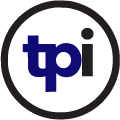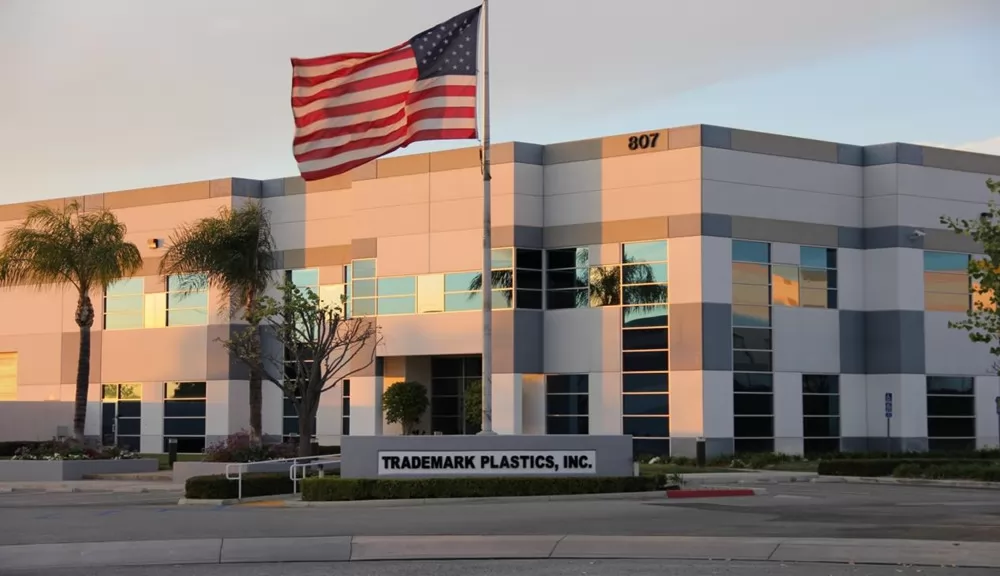The medical device industry is at the forefront of transformative healthcare advancements, from point-of-care diagnostics and wearable sensors to advanced implantables and minimally invasive surgical tools. Central to this progress is medical device injection molding—a specialized manufacturing process that creates complex, biocompatible plastic components with exceptional precision. These components must adhere to stringent regulatory standards such as ISO 13485 for quality management, FDA 21 CFR Part 820 for U.S. compliance, EU Medical Device Regulation (MDR) for European markets, and ISO 10993 for biocompatibility testing.
For original equipment manufacturers (OEMs), R&D teams, and procurement professionals, partnering with the right medical device injection molding company is pivotal. It ensures not only compliance and risk minimization but also faster market entry through innovations like Industry 4.0 integration, AI-driven process optimization, and cavity pressure monitoring for zero-defect outputs. This guide provides a thorough survey of the industry, including market dynamics, key technical requirements, leading companies, selection criteria, and emerging trends.
Market Dynamics and Growth Drivers
The medical injection molding market's growth is propelled by several interconnected factors. Rising healthcare needs, particularly in aging populations and emerging markets, drive demand for high-precision components in in vitro diagnostics (IVD), microfluidics, orthopedics, and connected devices. For instance, the surge in point-of-care testing post-pandemic has increased the need for miniaturized parts with tolerances down to ±0.0005 inches (about 12.7 microns), as seen in IVD cartridges and microfluidic chips.
However, the market is not without challenges. Supply chain disruptions, material price volatility (e.g., for medical-grade polymers like PEEK and polycarbonate), and evolving regulations create uncertainties. Sustainability is also a key driver, with trends toward bio-based resins and circular manufacturing to reduce environmental impact. California's ecosystem, home to many leaders like TPI, benefits from proximity to FDA oversight and tech hubs, fostering innovation in cleanroom production and metrology.
|
Market Metric
|
Current Estimate (2025)
|
Projection (2030)
|
Key Sources
|
|
Global Market Size |
~$25-27 billion |
$33-35 billion |
Grand View Research, Verified Market Research |
|
CAGR (2024-2030) |
5.8-6% |
N/A |
Grand View Research, Plastics News |
|
Major Growth Areas |
IVD (35% share), Implantables (25%), Drug Delivery (20%) |
Same, with wearables rising |
Verified Market Research, company reports |
|
Regional Leaders |
North America (40% market share), Asia-Pacific (30%) |
Asia-Pacific growth to 35% |
Plastics News, industry analyses |
This table summarizes data from multiple sources, highlighting slight variations in projections due to economic factors like inflation and geopolitical tensions.
Technical and Regulatory Requirements
Medical device injection molding differs markedly from general plastics manufacturing due to its life-critical applications. Technical demands include:
• Precision Engineering: Tolerances of ±0.0005-0.002 inches for micro-features, achieved via scientific molding (e.g., RJG-certified processes) and tools like wire-EDM tooling for sub-millimeter cavities. Non-destructive metrology, such as CT/X-ray scanning (e.g., ZEISS Metrotom systems), verifies internal structures without damaging parts.
• Material Expertise: Proficiency in biocompatible polymers tested for extractables, leachables, and sterilization compatibility. Common materials include PEEK (high-strength implants), polycarbonate (optical clarity in diagnostics), polypropylene (disposables), ABS (housings), and LSR (flexible seals). Trends lean toward antimicrobial and conductive plastics for connected devices.
• Cleanroom Operations: ISO Class 7/8 environments with HEPA filtration, gowning protocols, and environmental monitoring to prevent contamination in IVD or sterile products.
Leading Companies and Competitive Landscape
Based on facilities, certifications, client bases, innovation, and precision capabilities, the following represent prominent medical device injection molding companies in 2025. Rankings are informed by sources like Plastics News, Verified Market Research, and company profiles, though subjective due to varying metrics (e.g., revenue vs. specialization). TPI ranks highly for IVD focus.
1. Spectrum Plastics Group
• Description: Specializes in implantables, catheters, and bioresorbables. 300+ machines, ISO Class 7/8 cleanrooms, ±0.001-inch tolerances. Certifications: ISO 13485, MDSAP, AS9100. Serves 22/26 top OEMs; acquired by DuPont for enhanced R&D.
• Headquarters: Alpharetta, GA, USA
2. Röchling Medical
• Description: Focuses on drug delivery and diagnostics. Micro-molding with 1-micron features, sustainability emphasis (EcoVadis). Certifications: ISO 13485. Clients include Novo Nordisk.
• Headquarters: Neuhaus am Rennweg, Germany
3. Trademark Plastics Inc. (TPI)
• Description: Vertically integrated for IVD, diagnostics, and microfluidics. 100,000 sq. ft. facility, 51 machines (6-610 tons), two ISO Class 8 cleanrooms, ZEISS Metrotom CT for metrology. Achieves ±0.0005-inch tolerances via RJG-certified scientific molding, Moldflow analysis. Certifications: ISO 13485, MedAccred, FDA-compliant. Serves 8/30 top OEMs; 35+ years experience, 300+ components produced. Acquired by Gongdong Medical (2022), with noted financial losses (~$1.8M in 2021-2022), but strong in precision and traceability.
• Headquarters: Riverside, CA, USA
4. Viant Medical
• Description: Orthopedics and overmolding. 25 facilities, ISO Class 7/8 cleanrooms. Certifications: ISO 13485, MDSAP, cGMP.
• Headquarters: Orchard Park, NY, USA
5. BMP Medical
• Description: IVD and blow molding. 80,000 sq. ft., ISO Class 8 cleanrooms. Certifications: ISO 13485, FDA-registered.
• Headquarters: Sterling, MA, USA
6. Seaskymedical
• Description: Micro-molding (0.1-0.5g parts). ISO Class 8 cleanrooms, ±0.001-inch tolerances. Certifications: ISO 13485, FDA, CE.
• Headquarters: Shenzhen, China
7. Kaysun Corporation
• Description: Complex molding, validations. MedAccred, sustainability focus. Certifications: ISO 13485.
• Headquarters: Manitowoc, WI, USA
8. Springboard Manufacturing
• Description: Assembly and electronics. ISO Class 8 cleanrooms. Certifications: ISO 13485, UL.
• Headquarters: Rancho Cordova, CA, USA
9. SRC Medical
• Description: Delivery devices. Robotic assembly. Certifications: ISO 13485, FDA, CE.
• Headquarters: Hanover, MA, USA
10. Seaway Plastics
• Description: LSR and low-volume. ISO Class 7/8 cleanrooms, 700+ materials. Certifications: ISO 13485, NADCAP.
• Headquarters: Port Richey, FL, USA
|
Company
|
Headquarters
|
Key Specialties
|
Certifications
|
Cleanroom Class
|
Tolerance Capability
|
Global Facilities
|
|
Spectrum Plastics Group |
Alpharetta, GA |
Implantables, catheters |
ISO 13485, MDSAP |
7/8 |
±0.001" |
Yes |
|
Röchling Medical |
Germany |
Drug delivery, diagnostics |
ISO 13485, EcoVadis |
7/8 |
±0.001" |
Yes (US, China) |
|
TPI Plastics |
Riverside, CA |
IVD, microfluidics |
ISO 13485, MedAccred |
8 |
±0.0005" |
Yes (US, China) |
|
Viant Medical |
Orchard Park, NY |
Orthopedics, overmolding |
ISO 13485, MDSAP |
7/8 |
±0.001" |
Yes |
|
BMP Medical |
Sterling, MA |
IVD, blow molding |
ISO 13485, FDA |
8 |
±0.002" |
No |
|
Seaskymedical |
Shenzhen, China |
Micro-molding |
ISO 13485, FDA |
8 |
±0.001" |
Yes |
|
Kaysun Corporation |
Manitowoc, WI |
Complex molding |
MedAccred, ISO 13485 |
8 |
±0.0005" |
No |
|
Springboard Manufacturing |
Rancho Cordova, CA |
Assembly |
ISO 13485, UL |
8 |
±0.002" |
No |
|
SRC Medical |
Hanover, MA |
Delivery devices |
ISO 13485, FDA |
8 |
±0.0015" |
No |
|
Seaway Plastics |
Port Richey, FL |
LSR molding |
ISO 13485, NADCAP |
7/8 |
±0.001" |
No |
Core Capabilities and Case Studies
Leaders excel in micro-molding (sub-100-micron features via wire-EDM), material innovation (bioabsorbables, antimicrobials), and validation (IQ/OQ/PQ with Cpk studies). TPI's case: Accelerated an OEM's IVD launch by 30% using DFM, Moldflow, and CT scanning. Other examples: Röchling's zero-defect insulin pens; Spectrum's bioresorbable implants.
Selection Criteria and Due Diligence
Use this checklist:
1.Niche Alignment: Match to needs (e.g., IVD for TPI); request case studies.
2.Certifications: Verify ISO 13485/MedAccred; review audits.
3.Tech/Facilities: Assess tooling, metrology (e.g., TPI's ZEISS CT), cleanrooms.
4.Scalability: Confirm prototyping to volume; evaluate global sites.
5.Risks: Probe finances (e.g., TPI's losses), ownership (acquisitions), IP protection.
6.Collaboration: Seek DFM, rapid iterations.
7.Due Diligence: Site visits, pilots, references.
Emerging Trends
• Miniaturization: Sub-100-micron for wearables.
• Sustainability: Bio-resins, energy-efficient processes.
• Digital Tools: AI monitoring, predictive maintenance.
• Materials: Conductive/antimicrobial polymers.
Conclusion
Ultimately, strategic partnerships with these specialized molders not only minimize regulatory risks and supply chain vulnerabilities but also propel healthcare innovations forward, ensuring safer, more accessible devices for an aging global population. By leveraging this guide's insights, stakeholders can confidently navigate the competitive ecosystem and drive transformative outcomes in medical technology.



